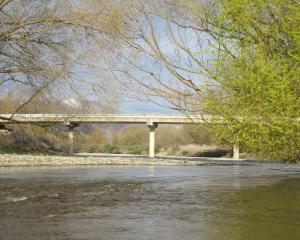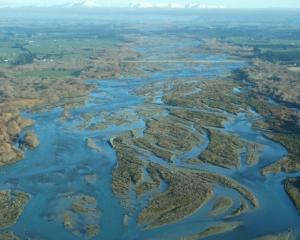For the first time in 24 years, the water coming from his bore is undrinkable.
Mr Miller, who grows lettuces hydroponically on his Riccarton Rd property, has water testing done regularly at a laboratory.
The latest results said the water was undrinkable because of high manganese levels. The 2008 New Zealand drinking water standards state anything over 0.4g of manganese per cubic metre of water could be harmful to humans; the manganese level in Mr Miller's water was more than four times that.
He said it was well known water from the Taieri Plain aquifer was high in manganese and had a low pH level, but the results were the first since he sank his bore in 1988 to show his bore water was undrinkable.
Water is vital to Mr Miller, who uses harvested rainwater and bore water mixed with nutrients to grow his lettuces.
He said he was not personally affected by the water being undrinkable, because he had installed a filtration system about 12 years ago to ensure a consistent standard of water for his plants.
He said he was raising the issue publicly because he was concerned other Taieri property owners with private bores might not realise their water could be undrinkable too.
"I know about this because I get tests done, but I wonder how many others who use bore water in their households get tests done? I think people should know."
The Otago Regional Council issues consents for private bores. Its director of environmental information and science, Dr John Threlfall, said on Thursday that there were 67 bores within a 5km radius of Riccarton Rd and eight, including Mr Miller's, within a 2km radius.
Mr Miller said ORC and Dunedin City Council staff did not seem interested when he raised the issue with them. He was told it was up to people with private bores to monitor the quality of their own water.
Dr Thelfall and city council water production manager Gerard McCombie confirmed that view this week.
Both said there were no regulations requiring people to test or treat their bore water and both said if they had a private bore they would get the water from it tested from time to time.
Neither knew whether the problem with Mr Miller's water was localised or might also be affecting other property owners.
Mr McCombie said he would be surprised if many property owners tested their water.
Some would not want to spend money on tests, some would be ignorant of water quality variations and some would not care, he said.
Others could have alternative sources of drinking water, such as bottled water or kitchen filtration systems.
Dr Thelfall said it was "fair enough" that Mr Miller was alerting other property owners to a potential problem with their water.
But he said manganese tended to affect the aesthetics of the water - its taste and appearance - and would be unlikely to affect people's health, even at levels which breached the strict drinking water standards.
The council takes Taieri aquifer water from nine bores to provide water for Mosgiel residents. The water is filtered and treated.
One bore is at Ayr St, Mosgiel, about 1.5km from Mr Miller's property.
Mr McCombie said the council tested its bore water daily for E. coli and other bacteria, and quarterly for manganese, nitrates from farm run-off, and other potentially harmful contaminants.
The level of manganese in the Ayr St bore water was consistently about 0.002g per cubic metre of water, he said.
While that was substantially less than the reading from Mr Miller's bore water, Mr McCombie said the Taieri aquifer ran on numerous levels and it was possible Mr Miller's bore was shallower and took water from a different part of the aquifer.
Advertisement





